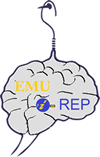- DSpace Home
- →
- 11 Faculty of Tourism
- →
- Theses (Master's and Ph.D) – Tourism
- →
- View Item
JavaScript is disabled for your browser. Some features of this site may not work without it.
Environmental impacts of coastal tourism on small island states: The case of North Cyprus
Oni, Kofoworola A.J.
Date:
2013-01
Abstract:
Small islands have remained fragile and very vulnerable to decisions resulting from external influences and the local institutional drive for economic development by harnessing the coastal resource for coastal tourism. As a result of this dependence on Sea, Sand and Sun, coastal tourism is often not defined before it gets developed as a tourism function; as such a misunderstanding and wrong definition leads to development of supporting activities which may not necessarily be compatible with that particular tourism function.
With these uninformed/misguided development activities, mostly by construction of hotels and second homes as well as roads next to the sea, two specific reactions have been triggered in North Cyprus. First is influence on the local coastal ecosystem where the coastal landforms, flora and fauna, being the very essence of coastal tourism are being transformed or destroyed. The second reaction is a gradual shift in the tourism profile of the island which is tending towards casino tourism rather than the traditional small islands’ profile of coastal tourism.
Nine propositions emerged with a model developed to show this chain of reactions. The influence of coastal tourism on coastal change and shift in tourism profile is seen to be mediated by coastal tourism activities where this can be moderated by planning and coastal zone management. Premised on a qualitative research approach, these findings were able to satisfy the aim of this research which was to evaluate coastal tourism, its supporting activities in a small island state and the ensuing environmental impacts. This study is significant by adopting the environment as an indicator of impacts, and it also bridges the research gap on environmental impacts of coastal tourism in North Cyprus.
A moratorium on constructions within 200-300 proximity of the coast was suggested, to be followed by coastal zone study and definition in order to define a vision for the island and develop a planning framework with inputs from all stakeholders.Oz:Küçük adalar, dışsal etkilerle alınan kararlar sonucunda hep etkileşime açık kalmışlardır. Yerel kurumsal güç kıyı kaynaklarını, kıyı turizmini geliştirerek ekonomik gelişmeyi hedeflemiştir. Bundan dolayı, deniz, kum ve güneşe bağımlılık, kıyı turizminin fonksiyonunu gelişme olmadan tanımlamamaktadır. Böyle yanlış anlama ve hatalı tanımlama turizm fonksiyonuna uymayan destekleyici aktivitelerin gelişmesine neden olmuştur.
Yanlış gelişme aktiviteleri, özellikle otel inşaatları ve ikinci konut, denize yakın yolların inşaatı, iki özel tepkiyi Kuzey Kıbrıs’ta tetiklemiştir. Birincisi; kıyı eko sistemi içinde, kıyı turizminin özü olan kıyı arazisi, bitki ve hayvan varlıkları değişmiş veya tahrip edilmiştir. İkinci tepki ise, adanın turizm profili yavaş yavaş adalarda geleneksel kıyı turizmi yerine gazino turizmine kaymıştır.
Bu tepkiler zincirini göstermek için dokuz ilgeç önerilmektedir. Kıyı turizminin, kıyılardaki değişimine etkileri ve turizm profilinde değişim, kıyı turizmi aktiviteleri ve bunlar planlama ve kıyıların yönetimi ile ilişkilendirilmiştir. Nicel araştırma yöntemi sonucu bulgular araştırmanın kıyı turizmini değerlendirmek, küçük adalarda destekleyici aktiviteler ve çevresel etkiler saptamak olan amacına ulaşmıştır. Bu çalışma önemlidir çünkü çevre, etkilerin göstergesi olarak kabul edilmiştir ve kıyı turizminin Kuzey Kıbrıs’ta çevreye etkileri alanında boşluğu dolduracak bir köprüdür. Ada için bir vizyon ve paydaşların görüşleri alınarak bir planlama çerçevesi geliştirmek amacı ile denizin kıyı şeridinden 200-300 metre uzağına kadar yapılaşma olmaması için moratoryum ve ardından kıyı bölgesi ve tanımı çalışması önerilmiştir.
Description:
Master of Science in Tourism Management. Thesis (M.S.)--Eastern Mediterranean University, Faculty of Tourism, 2013. Supervisor: Prof. Dr. Mehmet Altınay.
Files in this item
This item appears in the following Collection(s)
Search EMU I-Rep
Browse
-
All of DSpace
-
This Collection
My Account
Statistics
Eastern Mediterranean University, Özay Oral Library, Famagusta, North Cyprus via Mersin 10 TURKEY
If you find any errors in content, please contact osman.soykan@emu.edu.tr
If you find any errors in content, please contact osman.soykan@emu.edu.tr

EMU I-Rep by Eastern Mediterranean University Institutional Repository is licensed under a Creative Commons Attribution-Gayriticari-NoDerivs 3.0 Unported License
DSpace software copyright © 2002-2011 Duraspace








